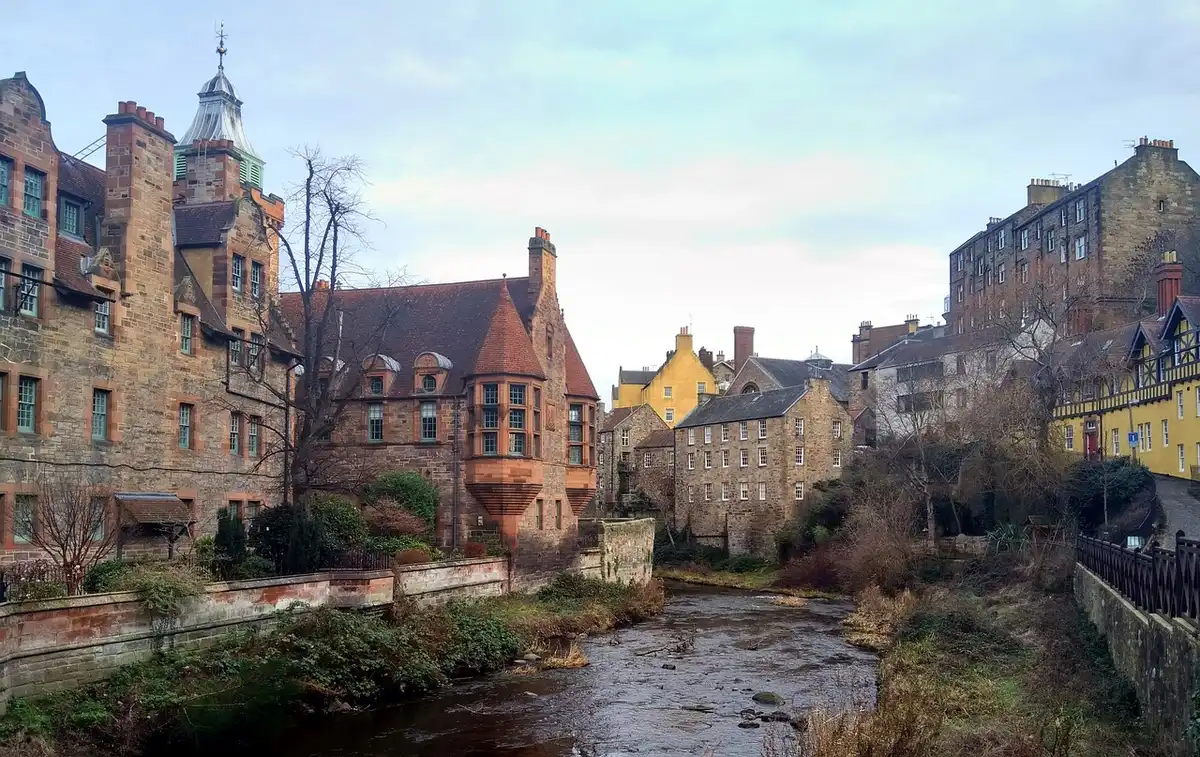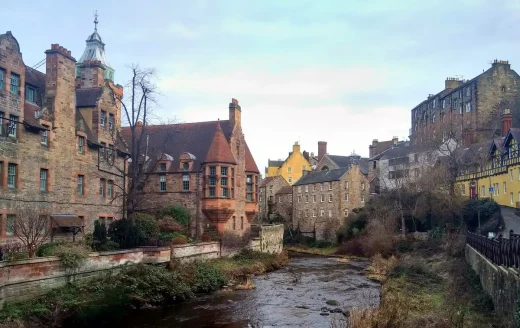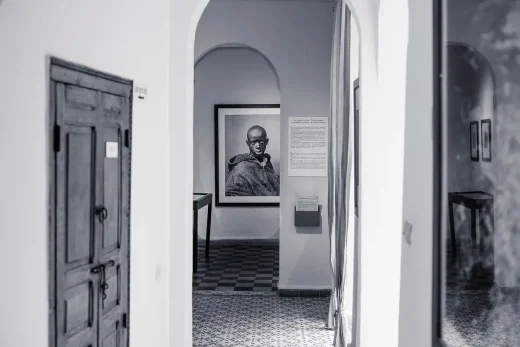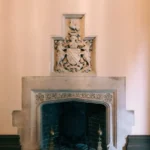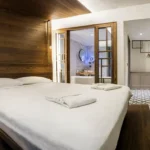Historic Edinburgh homes interior design guide, Scottish house style, Scotland home decor
Interior Design in Historic Edinburgh Homes
13 October 2024
Interior Design in Historic Edinburgh Homes: Maintaining Integrity While Adding Luxury
The streets of Edinburgh are lined with an architectural tapestry that tells stories of centuries past. From the stoic grandeur of Georgian townhouses to the ornate embellishments of Victorian villas, each style presents its own set of characteristics and challenges. Georgian architecture, with its emphasis on symmetry and proportion, offers large windows and spacious layouts, which are conducive to light-filled, elegant designs. Victorian homes, on the other hand, feature more decorative elements such as stained glass and intricate woodwork, demanding a thoughtful approach to modernisation that highlights rather than overshadows these details.
As a homeowner in Edinburgh, appreciating these architectural nuances is crucial. It allows you to make informed decisions about renovations that not only elevate the functionality of your space but also pay homage to its historical significance. Whether you’re dealing with the robust simplicity of a Georgian facade or the lavish interiors of a Victorian-era home, understanding the foundational elements of these styles will guide your design choices and help ensure that any additions feel integrated and respectful.
Historical Context and Architectural Significance
Delving deeper into the historical context of Edinburgh’s architecture enhances your appreciation of your home’s place within the city’s heritage. Edinburgh’s New Town, for example, is a masterpiece of city planning and Georgian architecture, recognised globally for its harmonious beauty and revolutionary design. Living in such a home, you carry the responsibility of preserving its architectural integrity while adapting it to modern living standards.
Victorian Edinburgh saw a different kind of evolution, with more expressive forms and intricate decorations reflecting the technological advancements and cultural shifts of the era. These homes were built to make a statement, often incorporating innovations of the time, such as gas lighting and elaborate plasterwork. Today, integrating modern luxury furniture into these spaces means finding ways to highlight their original splendour while ensuring the home meets current lifestyle demands. By understanding the historical context, you can create a dialogue between the old and the new that feels both seamless and impactful.
Challenges of Modernising Historic Interiors
The journey to infuse modern luxury furniture into a historic Edinburgh home is not without its hurdles. Structural constraints, strict preservation guidelines, and the inherent challenge of meshing different eras stylistically all play a part in shaping your renovation approach. Often, the very features that make your home unique—like original crown mouldings or century-old stone fireplaces—can limit your options for modern updates. This requires a creative and sensitive approach to design that considers both the physical limitations and the aesthetic implications of every change.
For instance, updating the heating system in a Georgian property may mean finding ways to integrate modern radiators without disrupting the symmetry that is central to its design ethos, especially as 59% of Georgian homes in Edinburgh have an Energy Performance Certificate (EPC) rating worse than ‘C’. Similarly, introducing contemporary lighting in a Victorian home involves choosing fixtures that complement rather than clash with its ornate characteristics. Each decision must balance modern needs with historical integrity, ensuring that new installations or renovations are both functional and sympathetic to the original design.
Preserving Authenticity While Enhancing Comfort
The ultimate goal in blending modern luxury with historic charm is to enhance comfort without overshadowing the unique character of the home. This involves making thoughtful choices about every element added or altered. Use materials and designs that echo the home’s era where possible and introduce modern elements subtly. For instance, using silk-covered cables for modern lighting in a Victorian home can preserve the antique look while updating the electrical functionality.
Ensuring that every new addition, from a luxury furniture store like Juliettes Interiors offering contemporary pieces to bespoke designer furniture tailored for your space, is chosen with both aesthetics and functionality in mind. This approach allows you to enjoy the conveniences of modern living while respecting and highlighting the historical significance of your property.
Colour Schemes and Textures that Bridge Eras
Selecting the right colour schemes and textures is essential for creating a seamless transition between old and new elements within your historic home. The colours you choose should complement the period details while introducing a fresh, modern vibe. Neutral palettes can serve as a backdrop that highlights special features, such as cornice and ceiling roses, allowing them to stand out. Adding textured wallpapers or fabrics can also add depth and interest without overwhelming the space.
Experiment with accent colours that add a contemporary touch without clashing with the historical essence of the room. For instance, soft blues and greens can modernise a space while maintaining a classic feel, especially when paired with traditional wooden furniture. In areas where you want a bolder impact, consider using richer shades in accessories or a single feature wall, which can be a dynamic focal point in an otherwise understated room.
Lighting Solutions to Enhance Aesthetics and Functionality
The right lighting is crucial in showcasing the beauty of your home’s historic elements while enhancing its modern functionality. Consider using a mix of traditional and contemporary lighting fixtures to illuminate your spaces effectively. For example, chandeliers with updated LED lighting can offer a nod to the past while providing energy-efficient light. Similarly, strategically placed modern floor lamps or spotlights can highlight architectural features or artwork without compromising the historical ambience.
Integrating smart lighting systems offers both convenience and modernisation, as well as the ability to protect delicate interiors from damage that might be caused by excessive heat or UV light from traditional bulbs. These systems can be programmed to adjust the lighting based on the time of day, enhancing both the usability and atmosphere of each room.
Sustainable Luxury: Materials and Methods
Incorporating sustainability into your renovation not only preserves the building’s structural and aesthetic integrity but also aligns with modern ethical standards. Choose materials that are both luxurious and sustainable, like reclaimed wood for flooring or recycled glass for countertops. These materials can add unique stories to your space while ensuring that your home’s update contributes positively to the environment. Further, employing modern techniques that enhance the home’s energy efficiency, such as thermal insulation integrated within original walls or high-performance windows styled to look traditional, can significantly reduce your home’s carbon footprint while maintaining its visual historical accuracy.
In addition, sourcing luxury furniture from brands that prioritise eco-friendly practices can help you maintain an environmentally responsible yet opulent interior. Designer furniture that uses sustainably sourced materials or employs artisanal craftsmanship can significantly enhance the uniqueness and ethical appeal of your space.
Integrating Modern Technology in Historic Settings
Modern technology should enhance the functionality of your historic home without disrupting its visual or structural integrity. Invisible sound systems that deliver high-quality audio without visible speakers or heating systems hidden beneath floors or behind existing features maintain the aesthetic purity of your rooms. Smart home technology, controlled via devices that replicate antique controls or are discreetly integrated, can add comfort and convenience without compromising the historical narrative of the home.
For example, integrating Wi-Fi-enabled devices that manage energy use efficiently or state-of-the-art security systems that blend seamlessly with your home’s period features can bring your historic residence into the 21st century without detracting from its charm. These technologies ensure that your home is as functional and comfortable as any modern dwelling while preserving its unique character.
Embracing the Future While Honouring the Past
Renovating a historic Edinburgh home with modern luxuries requires a delicate balance between innovation and preservation. By carefully considering each element—from architecture to furniture, from colour palettes to technology—you can create a living space that respects and revitalises its historical significance. This approach not only enhances your quality of life but also ensures that the legacy of Edinburgh’s architectural heritage continues to thrive in a modern world.
Comments on this guide to Historic Edinburgh homes interior design article are welcome.
Property Designs
trove.scot Historic Environment Scotland digital portal
525 Park View Ferry Road Homes
Rowanbank Gardens Edinburgh Housing
West Town Edinburgh Property Vision
Comments / photos for the Historic Edinburgh homes interior design advice page welcome.
